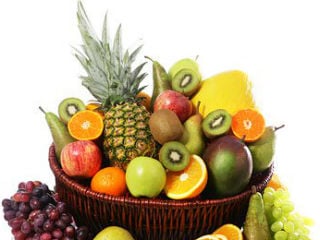
Internet is a storehouse of information. With a click of a mouse one gets recipes of favourite foods. It gives atleast 10 ways of how to get finished products from ingredients available with you. Now-a days recipes of many food dishes are suggested on social media. Recipes made with free use of curd, paneer (curdled milk), cream, coagulated milk (khawa), milk powder etc are popular because of which today refrigerators in every household are stocked with these products.
Due to excessive availability of information the so-called awakened or aware women of today speak about health differently – such as ‘eat paneer to get protein, avoid pure ghee to lower cholesterol levels’ etc. It seems funny to hear such concepts from them because on the other hand they feast on ice cream, cake, sweetmeats, halwas etc using ingredients such as condensed milk, cream etc. Just because milk is good it does not mean that all milk products can be consumed by anyone at anytime. The properties of milk and all its products such as paneer, cream, coagulated milk, milk powder, condensed milk etc are all of varying in nature hence each one is to be used selectively.
1. Paneer (curdled milk)
This is the favourite food of children today. Women too like it as it can be used to prepare a variety of recipes. To add to it nutritionists of today praise it for its high protein content and recommend to it too. Though proteins are a necessary in the diet high protein content is required only for those doing heavy physical work, exercise or sportsmen. (Traditional Bharatiya diet gives sufficient protein.) Protein diet is difficult to digest and only those doing heavy physical work can digest it. Individuals in whom the physical work is very less, find it difficult to digest proteins. Students in cities hardly do any physical work. Due to schooling, tuition’s and studying at home they lead a sedentary lifestyle for almost 12 to 14 hours consequently reducing their appetite and digestive capacity. (So, these children are very fussy while having meals and they relish only spicy, tasty favourite food items during meals. Today’s mothers have forgotten the old adage that when ‘there is intense hunger even bran tastes delicious’).
Unfortunately these very children are overloaded with proteins. (Besides paneer is not a food with high quality of protein or ‘food of choice’.) It is made by curdling milk hence it is one of those foods contraindicated in the diet. Incidence of skin lesions and cancers is high in East Bharat such as Bengal where it is consumed in large quantities. On this background paneer should not be used excessively in the diet. It can be eaten once a month just for a change. Those who want to gain weight, suffer from insomnia or have excessive hunger should consume it only with the advice of the physician.
2. Khawa (coagulated milk)
Khawa is prepared by boiling milk and thickening it on the fire. Khawa is tasty and is also difficult to digest, fatty, increases body mass and fat, increase sperm count, induces sleep and causes weight gain. Unadulterated khawa can be consumed on festivals but the khawa available in the markets today is not reliable especially as milk itself is adulterated. When the demand for it grows during festivals, celebrations,declaration of results etc it is even more suspicious to buy the khawa from market. All milk products including khawa are short-lasting. So, there is a possibility of adding chemical preservatives to prolong their life. Hence when you require khawa it is always safer to boil and coagulate milk at home.
3. Powdered milk
Thin milk is sieved through an extremely fine filter under high pressure and sprayed in the air as a result of which the water from it is sucked out and it becomes a powder. Nitrates are produced in it and the cholesterol in it is oxidised. Both nitrates and oxides are deleterious to health. The oxides accumulate in blood vessels and may lead to atherosclerosis, the basic cause of heart disease. Though milk powder is easy to use and long-lasting it should be used only as the last alternative to fresh milk.
4. Cream
Self-proclaimed experts advise addition of cream to vegetable preparations to give it thickness and sweetness. There is no need to discuss more about packaged creams. Even if fresh cream from home milk is used, when used with salt it becomes a contraindicated food item unfit for regular consumption. It may be consumed occasionally considering the season and appetite, and when the digestive capacity is good. If not eaten then it does not result in malnutrition and death, so it can certainly be avoided.
5. Frozen milk
Frozen milk is a boon to working women in cities. Using this milk in different recipes saves both time and energy. We have faith in reputed big companies but the same risks as above apply to this milk as well. Another point is that even educated people have yet to develop the habit of buying a product after checking its expiry date. This rule is extremely important for milk and its products.
6. Ice cream
Ice cream is the favourite of all, from the young to the old. You will hardly find anyone who does not like ice cream. In comparison with its population the number of milk yielding cattle in Bharat is low. Then we should question ourselves how are milk and milk products supplied to such a large population? Hydrogenated oil, sugar, food colours, flavours all used in ice cream making are indeed a controversial issue. Ice cream is certainly not an essential body nutrient; in fact it is just a tastebud tickler which later harms the body. It is your personal question on how much importance you attribute to this. A cube of alum can remove the impurities in the water in which it is put but till today nothing is available to clear the ill effects of ice cream on the body. So eat ice cream at your own risk. When we were children we would add fresh mango pulp or gulkand (made from rose petals) to thickened milk and make ice cream at home. This was not only refreshing, energizing, satisfying and cooling but also reduced the acidity. So, it can be prepared and consumed in summer. But, instead of eating it as a dessert it should be eaten along with a meal or as a substitute for a meal because it is heavy to digest. Obese people and diabetics however need to refrain from this.
To receive the benefits of milk products, then in first place milk should be of the traditional Bharatiya cow. If all products are homemade then it is more better. Generally, products made from cow’s milk are heavy to digest hence should not be eaten when not hungry or when ill. They reduce sweetness, cold, wind and bile and increase phlegm, body weight and sperms and hence are excellent for those with an athletic built, toned muscles and strength. If used in a balanced way in their diet then they are certainly beneficial. Those who think that above rules are hard then should perform strenuous work throughout the day and then can consume milk products happily. If they have to be given to children then they should be made to play outdoor games for 2 to 3 hours. However, the rule of using homemade products from milk of the traditional Bharatiya cow is mandatory.

 Acidity : Causes, Symptoms, and Remedy
Acidity : Causes, Symptoms, and Remedy Tips for eye health and maintaining good vision
Tips for eye health and maintaining good vision Practice this to inculcate a healthy habit of eating only twice in a day !
Practice this to inculcate a healthy habit of eating only twice in a day ! Healthy oil from a wooden mill
Healthy oil from a wooden mill For good health bask in sunlight every day
For good health bask in sunlight every day Give up junk food and embrace Ayurveda
Give up junk food and embrace Ayurveda